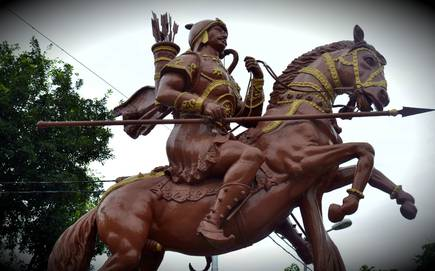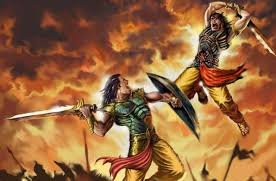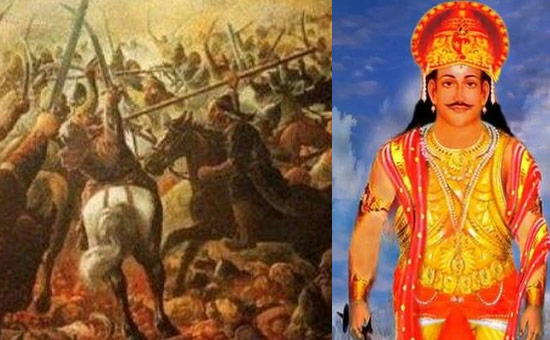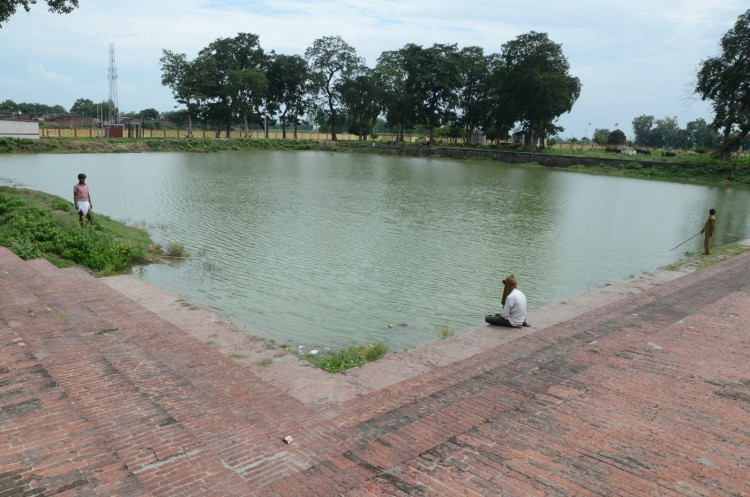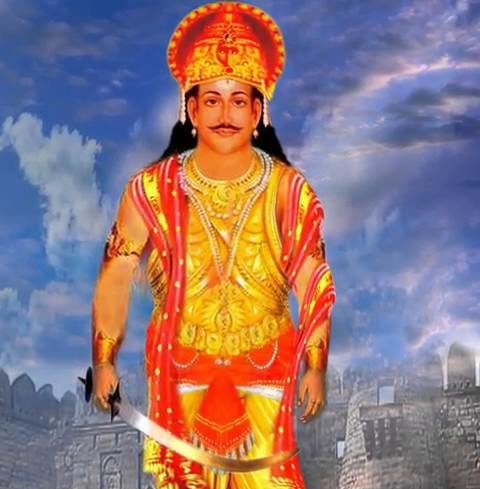Thread on battle of bahraich
Mahmud of Ghazni attacked India many times during 1000 AD to 1027 AD.
Muhammad Ghori defeated Prithvi Raj Chauhan in the Second Battle of Tarain in 1192 AD and established Islamic rule in India.
Mahmud of Ghazni attacked India many times during 1000 AD to 1027 AD.
Muhammad Ghori defeated Prithvi Raj Chauhan in the Second Battle of Tarain in 1192 AD and established Islamic rule in India.
what happened during the intervening 165 years.
Sultan Mahmud died in 1030 AD. Immediately thereafter, his nephew Salar Masud Ghazni invaded India in May 1031 AD with more than 1,00,000 soldiers.
This army crossed Sindh and Gujarat defeating local kings and reached Bahraich -
Sultan Mahmud died in 1030 AD. Immediately thereafter, his nephew Salar Masud Ghazni invaded India in May 1031 AD with more than 1,00,000 soldiers.
This army crossed Sindh and Gujarat defeating local kings and reached Bahraich -
-- in present Uttar Pradesh. The local rulers of the north Indian plain formed an alliance under Raja Suhal Dev Pasi.
In June 1033 AD, Suhal Dev asked Salar Masud to stop torturing the local populace and leave the land. Salar Masud ignored the warning.
In June 1033 AD, Suhal Dev asked Salar Masud to stop torturing the local populace and leave the land. Salar Masud ignored the warning.
King Anandpal Shahi tried to check this Gazni advance towards heartland of India. He was helped by king of Sialkot, Rai Arjun. But, this alliance was overwhelmed by superiority of numbers of Pathan army. King Mahipal Tomara tried to check their advance here but was defeated too.
In June 1033, as per Hindu traditions, Masood Gazni was intimated by confederation that the land belonged to Rajputs and Hindus and Masood should evacuate these lands. Masood replied that all land belongs to Khuda and hence he would not retreat.
On 13th June, Morning, army of about 120,000 descended on Gazni camp of Bahraich. Masood& #39;s army was completely besieged and encircled. The battle continued for hours. In the end, each and every man in Masood& #39;s camp was killed. No POW& #39;s were taken, no mercy was shown.
The location of this battle to be precise was near Chittaura Jheel, a lake about 8 KM away from modern Bahraich on Bahraich-Gond Road. The battle ended on 14th June with Victory of Raja Sukhdev and his HINDU alliance.
The invasion was completely crushed and such resounding was this victory that none of the sultan from Northwest dared to invade India for 160 years..
This is one of the golden pages of Indian History. India is indebted to series of Kings along the western border of India.
This is one of the golden pages of Indian History. India is indebted to series of Kings along the western border of India.
During the invasion by Salar Masud, regions of Lakhimpur, Sitapur, Lucknow, Barabanki, Unnao, Faizabad, Bahraich, Sravasti, Gonda etc. were ruled by a confederacy of 21 Pasi & Bhar chieftains under Raja Suheldev.
They were 1) Rai Saheb 2) Arjun 3) Bhaggan 4) Rai Raib 5) Gang 6) Makran 7) Shankar 8) Karan 9) Birbal 10) Jaipal 11) Shripal 12) Harpal 13) Harkaran 14) Harkhu 15) Narhar 16) Bhaalar 17) Judhari 18) Narayana 19) Dal 20) Narsingh 21) Kalyana.
Later, Sultan Firuz Shah Tughlaq, built tomb of salar mahmud at the place of the Ashram of Balak Rishi and the attached Sun temple & Suryakund. The Suryakund was said to have miraculous healing powers for skin diseases and leprosy.
The place has become the place of pilgrimage during the Urs of ‘Bale Miyan’ or ‘Ghazi Miyan’ towards the end of May in Jyeshtha month. It is the process of acculturation which has Islamised the Hindu folk tradition.
The place has retained its reputation as the place of healing for the suffering from leprosy and other skin diseases and also as a fertility shrine.
They are no doubt continuing with the sacred tradition of Sun worship, which pre-existed the cult of this Muslim
They are no doubt continuing with the sacred tradition of Sun worship, which pre-existed the cult of this Muslim
-- ‘Sun of Martyrdom’ (Aftab-i Shahadat), who was buried under a Mahua tree beside a sun-temple so much so that his head is still supposed to rest on the image of the sun.
The Suryakund has been renamed as Hoz Shamshi, Persian for Surya Kund. The story of Salar Masud has been re-cast as a tragic youth who was cursed to die as an unmarried or that of a liberator who fought again the oppression of the ‘evil’ King Suheldev.

 Read on Twitter
Read on Twitter
